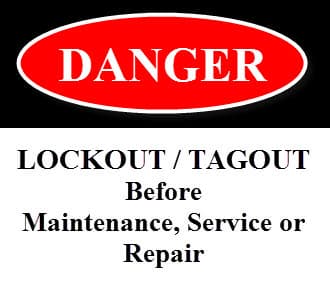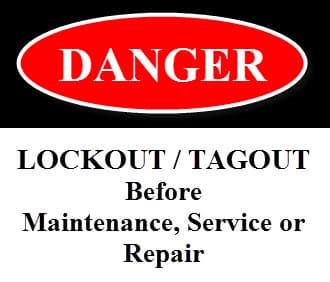[suffusion-widgets id=’3′]
Each year, over 4,500 workers are killed in work accidents in the U.S. Here’s a look at the top 5 most common OSHA violations in 2015.
- Fall Protection (1926.501)
Falls from heights result in hundreds of deaths and thousands of injuries per year, especially in the construction industry. In fact, according to OSHA, falls from heights account for roughly 40% of all construction accident deaths.
Any worker who performs work at heights is susceptible to fall accidents, such as:
- roof workers,
- steel workers, and
- brick/masonry workers.
Basically, any worker who performs work at heights is at risk.
- Hazard Communication (1910.1200)
These regulations deal primarily with chemical safety and avoidance of chemical exposure injuries during manufacture, transport, etc. Proper labeling, use of material safety data sheets and proper warning labeling is key to prevention of chemical spill/exposure accidents in the workplace, whether due to ingestion, inhalation, skin contact or absorption. These rules are particularly important in the manufacturing industry, where workers come into contact with chemical products.
- Scaffolding (1926.451)
Scaffold accidents or scaffold collapse accidents are the third leading cause of work injuries and accidents in the U.S. Like roof workers and the risk of falls from heights in the workplace, workers in the construction industry are especially at risk of being injured in a scaffold accident.
Workers who perform work while on scaffolds and workers/bystanders below are at risk of suffering injuries when scaffolds 1. aren’t constructed properly, or 2. aren’t used with proper fall protection equipment.
Scaffolds which are not constructed in accordance with OSHA guidelines often collapse, causing grave injuries. When scaffolds aren’t used with required fall protection equipment such as personal fall arrest system or guardrails, workers are injured when they fall from scaffolds. In addition, bystanders below, including innocent pedestrians may be injured when items and construction material fall from scaffolds.
- Respiratory Protection (1910.134)
OSHA’s respiratory protection regulations apply to all workplaces including shipyards, marine terminals, construction sites, etc. Contamination of air with dust, fog, fumes, gas, etc., is a serious problem. Many employers fail to comply with these regulations. As a result, workers often suffer short term and long term injuries and diseases.
Related: Workplace Accidents in Pennsylvania & New Jersey – Violation of OSHA Regulations
- Lockout/Tagout (1910.147)
 Machinery and equipment used in the manufacturing industry are very dangerous. Industrial and factory workers often sustain crushed limbs or amputation injuries when a piece of equipment starts operating unexpectedly. For example, a worker who is attempting to clean a machine gets caught when the machine suddenly and unexpectedly starts operating.
Machinery and equipment used in the manufacturing industry are very dangerous. Industrial and factory workers often sustain crushed limbs or amputation injuries when a piece of equipment starts operating unexpectedly. For example, a worker who is attempting to clean a machine gets caught when the machine suddenly and unexpectedly starts operating.
This is why OSHA regulates the development and use of lockout/tagout procedures. Proper lockout/tagout procedures eliminate the risk of injuries when workers are servicing or otherwise maintaining a piece of equipment. These regulations do not apply to the construction, agriculture or maritime industries.
OSHA regulations require that when employees come into contact with deenergized circuits, the circuits must be locked out or tagged out. A lockout device uses a direct means, lock/key, to hold a device in a safe position to prevent energizing the machine. A tagout device is a warning device such as a tag which indicates that the device/equipment cannot be operated until the tag is removed.
In 2013, lockout/tagout regulations ranked 8th in terms of the number of OSHA regulations at issue during workplace safety inspections. The most recent data from 2015 shows that lockout/tagout regulations are now in 5th place. This means that employers are failing to adequately protect workers from machinery accidents.
Workers’ Compensation – Not the End of the Road
When workers sustain catastrophic injuries like crushed limbs in a machinery accident, getting full compensation is of utmost concern. These types of injuries often result in total or partial disability. Many injured workers will be completely unable to return to work.
Workers’ compensation benefits simply do not provide financial security in these situations. In fact, workers’ compensation laws like those in Pennsylvania and New Jersey only provide medical benefits/treatment and indemnity (wage loss payments). Indemnity is often only a portion of the injured worker’s weekly wage.
What most injured workers don’t know is that they may receive financial compensation for their injuries by filing a tort claim or third party lawsuit. This is in addition to receiving workers’ compensation benefits. In other words, injured workers can file both a workers’ compensation claim AND a third party lawsuit.
Common defendants include employers, general contractors, subcontractors, architects, property owners, product manufacturers, etc. The key is getting the case evaluated quickly and properly by a work injury lawyer with sufficient experience investigating these cases. No stone can be left unturned. All avenues must be investigated.
Claims for Financial Compensation
Injured workers may receive financial compensation for medical bills, lost wages and pain and suffering. Oftentimes, in a work injury lawsuit against a third party, the injured worker may make claims to recover benefits that were paid via the workers’ compensation claim such as medical benefits and lost wages. The laws of many states like Pennsylvania and New Jersey simply require the injured worker to reimburse the employer/workers’ compensation insurance company from the proceeds of the third party lawsuit.
Compensation for pain and suffering in work injury cases depends on a whole host of factors such as the extent of the injuries, medical treatment, how the injuries and symptoms affect the worker’s quality of life/family, etc.
About the Firm’s Work Injury Law Practice
LBK handles work injury lawsuits in the northeast area including Pennsylvania, New Jersey and New York. The firm also has the resources to handle work injury lawsuits nationwide. Call for a free consultation.
PA (866) 641-0806 | NJ Click To Call | Toll-Free Click To Call
DISCLAIMER: This website does not create any attorney-client relationship or provide legal advice. It is crucial to speak to a qualified lawyer prior to making any decision about your case. Read full disclaimer at the bottom of this page.

